Is it possible to have rooms with vastly varying ceiling heights on the first level on a fully brick and cement built home?
Firstly, my main concern is that I was told previously that it was completely doable, so I worked for months on a design, finding different 3d software, and switching back and forth between those and photoshop, and sketcup etc to create the perfect design. Now my husband is freaking out because the “line map” or basic floor plan I sent the contractor in Pakistan (this is where the house is being built), hence the brick and cement usage, as opposed to drywall etc, shows the varying heights of the rooms and my husband thinks it is impossible to acheive anything but a flat ceiling. I wanted to know if this is true?
If so, my design is just a tad complicated in that it has upper rooms on the “first level” above the rooms that are much lower in height. So, that is another thing that concerns my hubby, he thinks it would be impossible to place second rooms on top of an already existing room on the first level when the Great Hall (43×40 and 22′ height) is so tall, and the rooms beside it are all varying heights, and much smaller. I’m not sure what to think anymore because I am no longer able to get a hold of the contractor I had initially posed this question to.
Here is the (very basic) floor plan I quickly threw together in minutes for the contractor to get a idea. As he was having a hard time with the 3d models, which is understandable.
As you can see, the rooms alongside the Great Hall are all smaller. I guess the 18′ ones shouldn’t be that big of a difference honestly, I see it in design all of the time, even in open rooms on the same floorspace etc. But I’m getting worried about the rooms that are of 12′ height, as I’ve placed rooms on top of those “gaps”. My husband isn’t able to explain to me “why” this cannot be done. But he sure is pretty adamant about it being a problem. I just wanted to know if what I am attempting to achieve is plausible, and maybe it has been done before. I know I’ve seen it done all over the place in the U.S, where people have made higher seating/storage or sleeping areas…or even childrens small rooms etc above rooms. But I’m not sure anymore what can be done in Pakistan with the way that they build. I’ve seen pretty complicated floor plans there too though!
Here are some photos of what I have done with “adding rooms on top”.
As you can see above. Ive got the Great Hall at a very high ceiling (you’ll see just sky right now however) and the rooms can’t obviously be that height! So I have some of them at 18″, where it makes sense to have a decorative curved ceiling etc, but I do have 3 of the 6 rooms(the ones with the brown boxes infront and the windows and doors floating up there) at 12′ and then rooms on top of them at 10′ each.
See the windows? The stairs. Yes, so basically that is what I’ve done. There is a second floor above “First Level” with 3 rooms on the left and 3 on the right with a balcony in between looking down into the Great Hall (where the fountains are). I am curious as to whether achieving the rooms on top of eachother is possible. I’m pretty sure it is, as I see it alot. However, I am not a contractor so what do I know.
I would really appreciate any input!
Thank you!
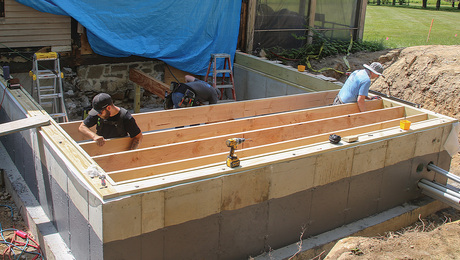
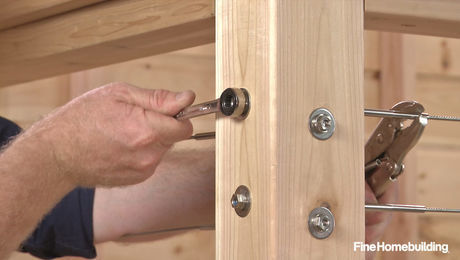

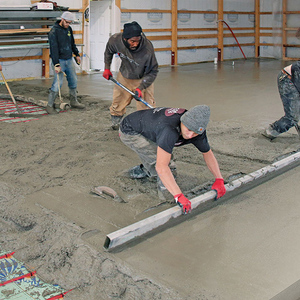
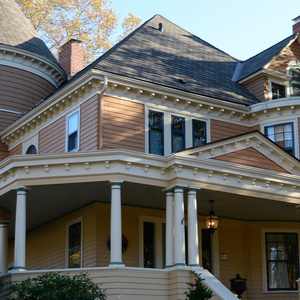
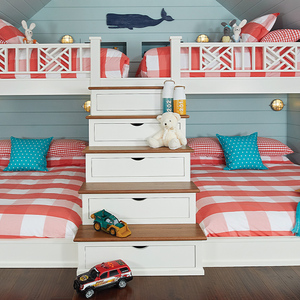













Replies
You can pretty much do anything so long as M C Escher wasn't your architect. It's mostly a matter of cost and complexity.
But your images above are unclear. Where/how are you measuring room height? You generally want all the rooms on the upper level to be on the same level, so you can walk from one to the other without having to use more stairs, but that would imply that the rooms below are all essentially the same height (assuming the bottom floor is all essentially on one level).
In your first drawing it's unclear whether the rooms are the upper or lower level. If upper level, what do the doorways that are shown lead to? If the lower level, how do you arrange for the upper level floors to all be at the same level? And, where, in the first drawing, are the spiral staircases that are shown in the second image? (And do you understand that while a spiral staircase is an "interesting architectural feature", it's hard for anyone who is elderly or a bit infirm to negotiate? Not to mention getting furniture up the stairs.)
The pictures are of the same level. The first floor. The doors on top are place above the shorter rooms only. So, where there would be a huge difference in the height from the Great Hall I added a second room on top of those to match the 22' of the Great Hall, so that there would be no need to make the upstairs go up and down and such.
Basically the Great Hall has a super high ceiling at 22'. 2 of the adjacent rooms have 18' ceilings. 3 of the rooms have 12' ceilings. So what I tried to do is place a second room over the top of those 12' rooms to keep the ceiling height the same when adding the second floor. Call it using space I guess. Honestly, it was even a bit difficult in my mind that if I had left the 3 short rooms at 12" how would we "fill" that height difference to create a straight/flat (no ups or downs) ceiling and base for the second level. So I thought well, I've seen it so many place where people have the room either split into a 9-12" regular height room and then an alcoveish/seating area etc type thing at the top with access like stairs or ladders to get to those rooms/areas. So I thought why not just add a room on top and cover the difference between heights to balance out the base for the second floor.
The thing is, if I were to leave all the rooms the height they are, what would we do to keep the second floor all level and not up and down in areas? Would we have to leave that whole 10' area empty because filling it would be too heavy etc. I just thought why not add a room, like people add seating etc overtop. Basically a two level room with entrace throught the Great Hall, rather than within that room.
I hope I was better able to explain what I am trying to achieve.
I think you need to be working with a legitimate architect.
It's clearer now.........
You will not have vastly varying ceiling heights-they'll all be 22'. This I understand now that you want no difference in the floors of the second level.
Adding lofts to areas that would be made available under that 2nd floor would not be a problem-other than engineering the methods of holding up the lofts.
So, sure thing. Here there are minimum height restrictions for living space. Pakistan?
Best of luck.
Thank you! That is the answer I was loking for! I can't tell you how much I appreciate your help, even though I'm not a professional! (umm..obviously)
Do you know anywhere I could find ideas or steps for such methods? To show the contractor or new architect? By loft, do you mean a small area like this: View Image
Or a full room like I'm interested in. With separate access/entrance from the same wall as the room belows entrance is? Like this: View Image
I don't want it looking like a loft just for a bed or two or something. I actually want to make the upper room just as useful as any other room in the house. Not worrying about it not being able to handle weight etc. Or being half of the room below. I don't want the room below to be seen. More like, I'd like for the room (loft as you say) above to act like a second floor, so to speak.
The minimum is 9'. But you will rarely see any that low, unless it's a small flat or apartment, maybe. Super rarely. The average is 11'/12'. But 10' is becoming quite common now with all of the new designs popping up.
I'm pretty sure even here in the U.S that a 10' height living space is quite enough. As I normally see that around anyways. I actually have never seen a room (other than a hall or dining/entertaining type space) more around 12' like in Pakistan. They like their ceilings high, as the use of ceiling fans is a must.
Mum
"Or a full room like I'm interested in. With separate access/entrance from the same wall as the room belows entrance"
In our barns here in Ohio, a hayloft can and does often span most of the area within the barn. So yes, size is up to you.
However, you need the structure engineered to give you what you want lookswise as well as to show you what you cannot do w/o major building and money.
And yes to the mezzanine title-a floor within a tall room (which your designated "second" floor atop the greatroom and entire first floor footprint. Search mezzanine and you should find many examples you could supply your engineer/architect.
and thanks for clearing up your ideas, more info the better.
Restate things:
So the drawing below is your first floor floor plan. A first floor great room in the lower left with 22' ceilings. The great room is flanked by two first floor rooms on the north side, and four first floor rooms on the east side.
Each of those 12' high first floor perimeter rooms will have a second floor room directly above it with a 10' high ceiling.
Each of the 18' high first floor rooms will have a decorative curved or barrel vaulted or groined ceiling, and that ceiling will be built down 3' for the room to have an 18' height?
In the 3D drawing I see you have sprial staircases. It appears that they will be used to get to the second floor rooms that are above the rooms on the north and east sides of the great room.
I don't understand the "grand staircase" on the north side of the great room. The staircase bisects the partition wall on the north side of the great room. I can see that the left side of the staircase could lead to the second floor room in the upper left corner of your drawing, but you lready have a spiral staircase to get up there. Is that grand staircase actually supposed to lead to the roof?
As I see things, you can, in general, have your first floor rooms with the varying ceiling heights, as well as the second floor rooms as they are, where they are. But with the second floor rooms for the most part being separated from one another by first floor rooms with 18' ceilings, you won't be able to move from one second floor room to another. To get from one second floor room to another, you'll have to go down a spiral staircase, through the great room, and then up another spiral staircase. View Image
Never mind...
I just saw your next post with this drawing:
View Image
Now I'm guessing that the "grand staircase" actually leads all the way up to the "second level" and your spiral staricases lead to the mid-level "gap rooms".
I'm awful at explaing. I'm
Just saw your recent post! Yes! Exactly! :D
I'm awful at explaining. I'm so sorry.
Actually, the grand staircase leads to a second level above this entire floorplan. This is why I worry about uneven heights on the first floor. "Layering" those second rooms on top of the 10' difference in the 3 rooms makes it so that the ceilings are all 22' and the huge 10' difference isn't wasted. The rooms that I will be adding on top of the 12' ones are actually on the same level. They won't be considered the second floor at all. They are just sort of making use of the major height differences and making it so we can have the extra rooms we needed without buying more land and adding them on. As you can see, the second floor starts where the Great Hall ends (bottom to top). These rooms with the spiral staircases are on top of the lower rooms.
Man am I being obnoxious!!!
So it is possible right? What kind of "support" should we use to create those rooms? Or would they just lay on top like a second level usually does? That's what I'm assuming, but I would love a difinitive answer for my contractor, or something to possibly go over as an option with the new architect.
You can build anything - almost!
If you look at the great buildings of Europe and the middle east, you will see great cathedrals, churches, Banks towering into the sky. They always have crypts below that have normal ceiling heights and above towering open spaces holding thousands of people. Alongside are mezzanine floors, also popular in banks and other office buildings.
So yes, what you are asking for is simple and is done every day.
You have chosen well, going for brick means you can have thick walls, that are air tight, very important when you are trying to keep the hot sun out and of course the cold in winter.
I want to thank you so much for your time and effort in answering all of my (albeit, redundant) questions! I really do appreciate it very much!
Thank you so much!
Again, if you don't get a competent architect involved you WILL end up with an Escher building.